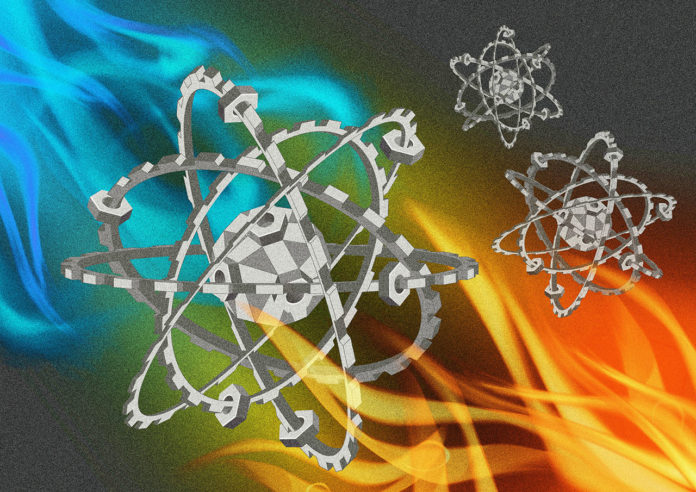A new study by the Centre for Quantum Technologies (CQT) and Department of Physics at the National University of Singapore (NUS), SUTD, and the University of Augsburg in Germany has shed light on the mechanics of atom-sized devices.
Scientists have shown that a single atom can function as either an engine or a fridge. Engineering such devices could be useful for future computers and fuel cells to control energy flows.
Dario Poletti from the Singapore University of Technology and Design (SUTD) said, “Think about how your computer or laptop has a lot of things inside it that heat up. Today you cool that with a fan that blows air. In nanomachines or quantum computers, small devices that do cooling could be something useful.”
Manas Mukherjee, a Principal Investigator at CQT, NUS, who led the experimental work, said, “We want to understand how we can build thermodynamic devices with just a few atoms. The physics is not well understood, so our work is important to know what is possible.”
For the study, scientists studied the thermodynamics of a single barium atom. They devised a scheme in which lasers move one of the atom’s electrons between two energy levels as a significant aspect of a cycle, making some vitality be driven into the molecule’s vibrations.
Like a car engine consumes petroleum to both move pistons and energize its battery, the atom uses energy from lasers as fuel to build its vibrating motion. The atom’s vibrations demonstration like a battery, putting away vitality that can be extracted later. Revise the cycle, and the atom acts like a fridge, expelling energy from the vibrations.
Poletti said, “In either mode of operation, quantum effects show up in correlations between the atom’s electronic states and vibrations. At this scale, the energy transfer between the engine and the load is a bit fuzzy. It is no longer possible to do work on the load, you are bound to transfer some heat. The fuzziness makes the process less efficient, but the experimentalists could still make it work.”
Scientists used a barium atom from which an electron (a negative charge) is removed. This makes the atom positively charged so that it can be more easily held still inside a metal chamber by electrical fields. All other air is removed from around it. The atom is then zapped with lasers to move it through a four-stage cycle.
After applying 2 to 15 cycles, the atom’s vibration has been quantified. Scientists then repeated the cycles up to 150 times, measuring, on average, how much vibrational energy was present at the end.
They observed increased vibrational energy when the atom was zapped with an engine cycle, and decreasing when the zaps followed the fridge cycle.
First author and Ph.D. student Van Horne said, “Understanding the atom-sized machine involved both complicated calculations and observations. The team needed to track two thermodynamic quantities known as ergotropy, which is the energy that can be converted to useful work, and entropy, which is related to disorder in the system. Both ergotropy and entropy increase as the atom-machine runs. There’s still a simple way of looking at it. Loosely speaking, we’ve designed a little machine that creates entropy as it is filled up with free energy, much like kids when they are given too much sugar.”
Journal Reference:
- Single-atom energy-conversion device with a quantum load. DOI: 10.1038/s41534-020-0264-6
